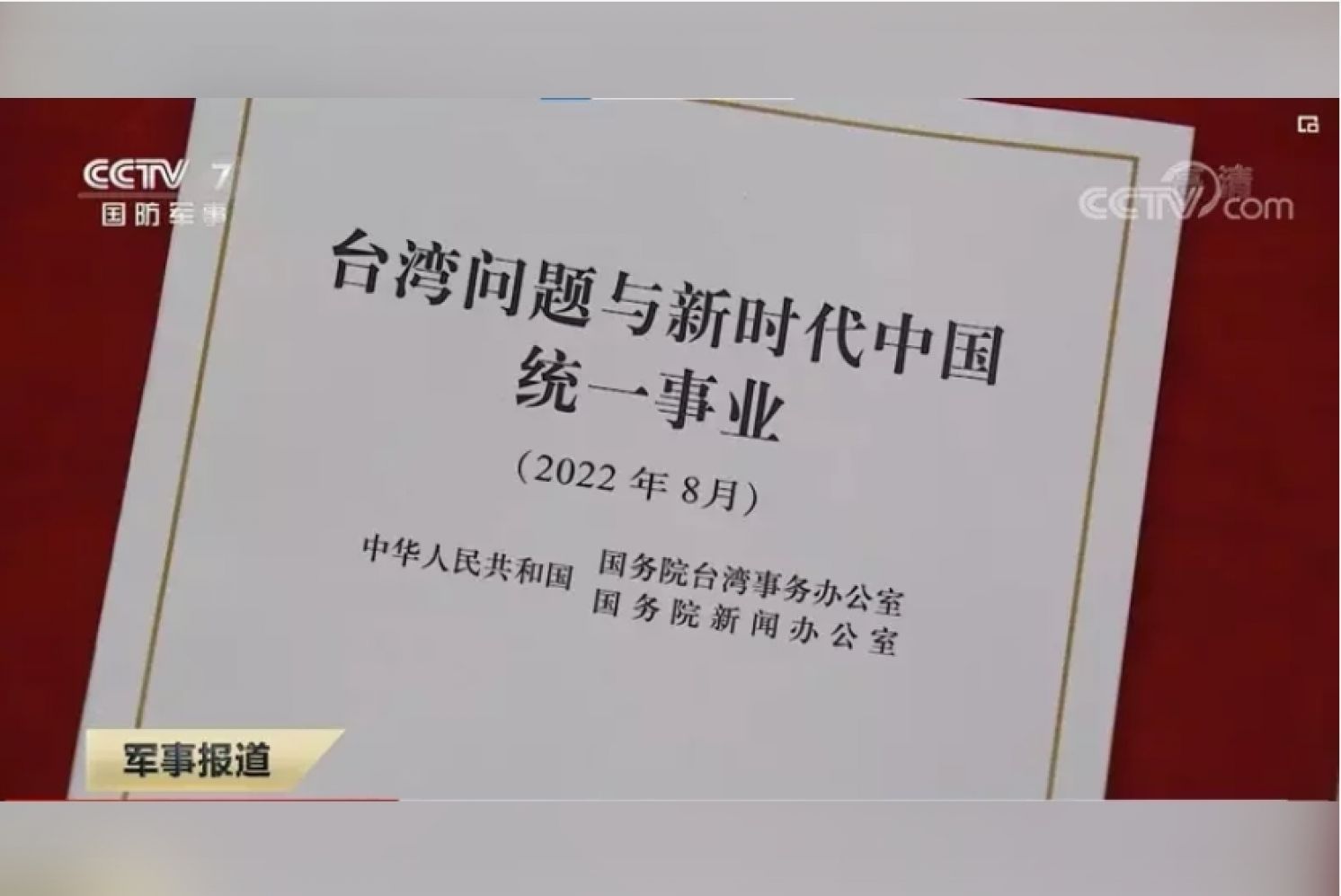
Unification by Military Force on the Agenda?
By Kao Yun-Kuang
United Daily News, August 12, 2022
In order to counteract the visit of Speaker Nancy Pelosi of the United States House of Representatives to Taiwan, Communist China launched live-fire military exercises to lock and encircle the island, and missiles flew over Taiwan after Pelosi departed. As a result, not only the “virtual reality” of the “strait’s center line” no longer exists, but also the future military exercises to lock and attack Taiwan will become a new normal. Will China promote reunification by force, and will there be war in the Taiwan Strait? Whether Taiwan is the next Ukraine has become an issue of grave concern to the Taiwanese people.
At this juncture, on August 10, the Taiwan Affairs Office (TAO) of the State Council of China issued a white paper on the Taiwan issue and China’s Reunification in the new era. It has not attracted great attention in Taiwan. However, netizens in the mainland and some overseas scholars and experts who advocate military reunification believe that this is the mainland’s “public statement” of China’s preparation for reunification by force. Is the white paper China’s official call to arms for the reunification of Taiwan?
From the various documents of China’s long-term policy toward Taiwan and the leader’s speeches, it seems that the white paper didn’t exceed the scope of various relevant Taiwan policy discussions.
However, if you read closely between the lines, as of now, the white paper implies a certain degree of “stronger” intention for military reunification.
Although the white paper spends a lot of space emphasizing “peaceful unification”, it expresses strong criticism of “using Taiwan to counter China,” “using force to seek independence,” and “rejecting reunification by force.” That the ruling Democratic Progressive Party (DPP) promotes independence is a foregone conclusion now. However, the white paper also serves as a warning to the opposition Kuomintang (KMT) for its “unreserved pro-American” attitude.
Another noteworthy point of the white paper is that it uses a considerable amount of space to carefully elaborate the historical relationship between Taiwan and China and the “indivisible” legal and factual origins—a similarity to Russian President Vladimir Putin after launching the Russian-Ukrainian war. The author believes that this is why many people believe that the white paper is a “public statement” that Communist China intends to use force to solve the Taiwan issue.
The white paper strongly emphasizes that Taiwan is a province of China, although in the full texts, it didn’t indicate China can only be the People’s Republic of China, and that the Republic of China doesn’t exist. Perhaps this is because the DPP stole the signboard of the R.O.C. and threw it into the trash can of history. If the white paper has this meaning, the future reunification will only be the “one country, two systems” formula of Hong Kong and Macao. Although the white paper continues to emphasize the “One China” principle and “1992 Consensus,” it does not explicitly claim “One China 1992 Consensus” or “1992 consensus under One China.” But it seems that China no longer harbors much hope for the 1992 Consensus, because the white paper believes that the one China principle seems to have been hollowed by Taiwan and foreign powers.
If the white paper implies launching war for the reunification of Taiwan, will it happen immediately? The author assesses that it may happen if President Tsai Ing-wen continuously overrates her ability and provokes Communist China, disregarding the life and death of the Taiwanese people. The 2024 presidential election in Taiwan should be key. Should the people in Taiwan elect the party that promotes Taiwan’s independence, and Xi Jinping entered the third term smoothly, war for the reunification of Taiwan might happen for the completion of the “sacred mission of national reunification.”